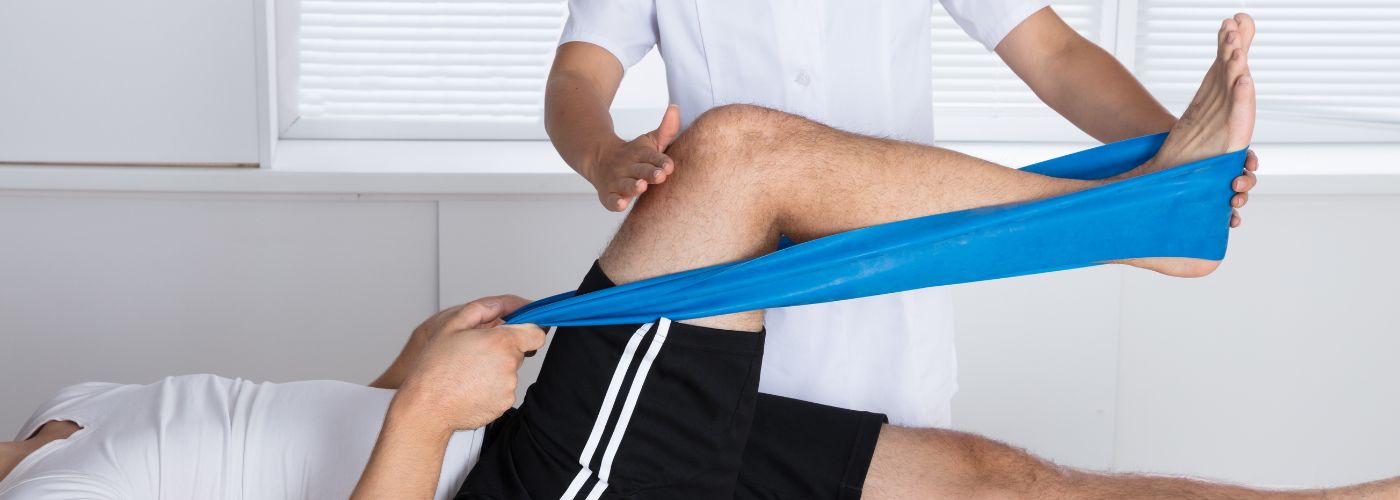Aches, muscle tension, and even worse, injury, are the last thing you want when achieving your fitness goals. Not only is it painful and time-consuming to deal with, but it keeps you from moving closer to your aspirations and physical capabilities. However, injuries can happen to anyone, no matter what level of fitness you’re on. Whether you’re getting back into the groove of your fitness routine or have been working out for years, here are a few easy tips on how to avoid workout injuries.
How To Prevent Workout Injuries

Exercising is important for both physical and mental health. But if not done correctly, it can lead to injury. To ensure a safe workout experience, here are some tips on how to prevent workout injuries.
First and foremost, be sure to warm up before starting your workout routine. This helps to get the blood flowing and prepares your muscles for exercise. This could come in the form of stretching or doing mobility movements to get the muscle active before a big lift. Even wearing supported belts can reduce the risk of injury. It’s also important that you understand proper form before starting any new exercises or variations of existing ones.
Doing them incorrectly can lead to strain or even tearing of the muscle fibers. Additionally, be sure that you challenge yourself with appropriate weights or resistance levels in order to continue making progress without risking injury.
Finally, listen to your body when it’s telling you enough is enough – don’t push too hard too soon!
Can I Still Workout With An Injury?

Exercising with an injury can be a tricky situation for some people. As much as you may want to stay active and maintain your workout routine, it is important to remember that taking the time to heal is essential for preventing further damage.
However, depending on the type of injury and how severe it is, there are still ways to exercise safely without putting too much strain on your body. For instance, if you have a knee injury, low-impact exercises such as swimming or yoga can help keep you active while allowing your muscles to recover at the same time. Similarly, if you have an arm injury, then upper-body workouts like pushups and triceps dips could also be viable options.
It’s always best not to force yourself into exercising before giving your body enough time to heal properly. However, it’s completely safe to work out other muscle groups that aren’t injured. Always seek the help of a doctor if an injury becomes too unbearable.
If you’re suffering from a small injury, then it may be a good option to train the affected muscle. This may increase blood circulation to the damaged tissue, which can actually speed up the recovery.
What Is The Best Type Of Exercise To Prevent Injury?

Depending on the type of injury and how severe it is, there are still ways to safely exercise without putting too much strain on your body.
For instance, if you have a knee injury, low-impact exercises such as swimming or yoga can help keep you active while allowing your muscles to recover at the same time. Similarly, if you have an arm injury, then upper-body workouts like bicep curls and tricep extensions could also be viable options.
It’s always best not to force yourself into exercising before giving your body enough time to heal properly.
What Helps Muscles Recover Faster?
Every athlete knows the challenge of pushing their body to its limits. But what happens when that hard work takes a physical toll? When muscles are sore or strained, it can be difficult to resume training and continue on with normal activities. Fortunately, there are several ways athletes can do to boost muscle recovery after a tough workout.
First, staying hydrated is key. Our bodies need adequate water to repair and rebuild muscle fibers quickly and effectively. Drinking plenty of fluids before, during, and after a workout helps replenish lost electrolytes and prevent dehydration – both of which can slow down the recovery process significantly.
Another way to speed up muscle recovery is by getting enough restful sleep every night. Sleep plays a vital role in helping our bodies rejuvenate after intense exercise sessions because it’s during this time that hormones essential for tissue repair are released into the bloodstream.
Can TENS/EMS Technology Help Recovery?

Thanks to huge advancements in technology, TENS and EMS devices are great for recovery whether you’re injured or not. Transcutaneous Electrical Nerve Stimulation (TENS) has been a popular alternative therapy studied by pain management clinics, physical therapists, and personal trainers, and have seen results from professional athletes to the average person.
Electrical Muscle Stimulators (EMS) may help enhance muscle and athletic performance and are used before, during, or after training. These devices simply stimulate and contract the muscles for better muscle execution and injury prevention. With various modes and features to target different areas of the body, these devices are also “massagers” for relaxation and de-stressing purposes.

Related Stories
5 Ways to Support Bone Strength with HiDow
World Osteoporosis Day (October 20) October 20 is World Osteoporosis Day, and chances are, you’ve...
Oct
FDA-Cleared Is a Flex. Here’s Why.
Pulling Back the Curtain You’ve seen it on boxes, on websites, in ads: FDA-cleared. It...
Sep
This Is Fibro. This Is Larry.
September is Pain Awareness Month. And we’re not here to give you medical definitions or...
Sep
Train Your Relaxation Reflex
How often do you find yourself struggling to switch off after a long day? With...
Aug
Back To School Fitness: Balancing Academics & Athletics
Most student athletes don’t have a motivation problem. They show up. They train hard. They...
Aug
How to Cope with a Sports Injury
Staying active helps your body stay strong. But sometimes, activity leads to pain, strain, or...
Jul